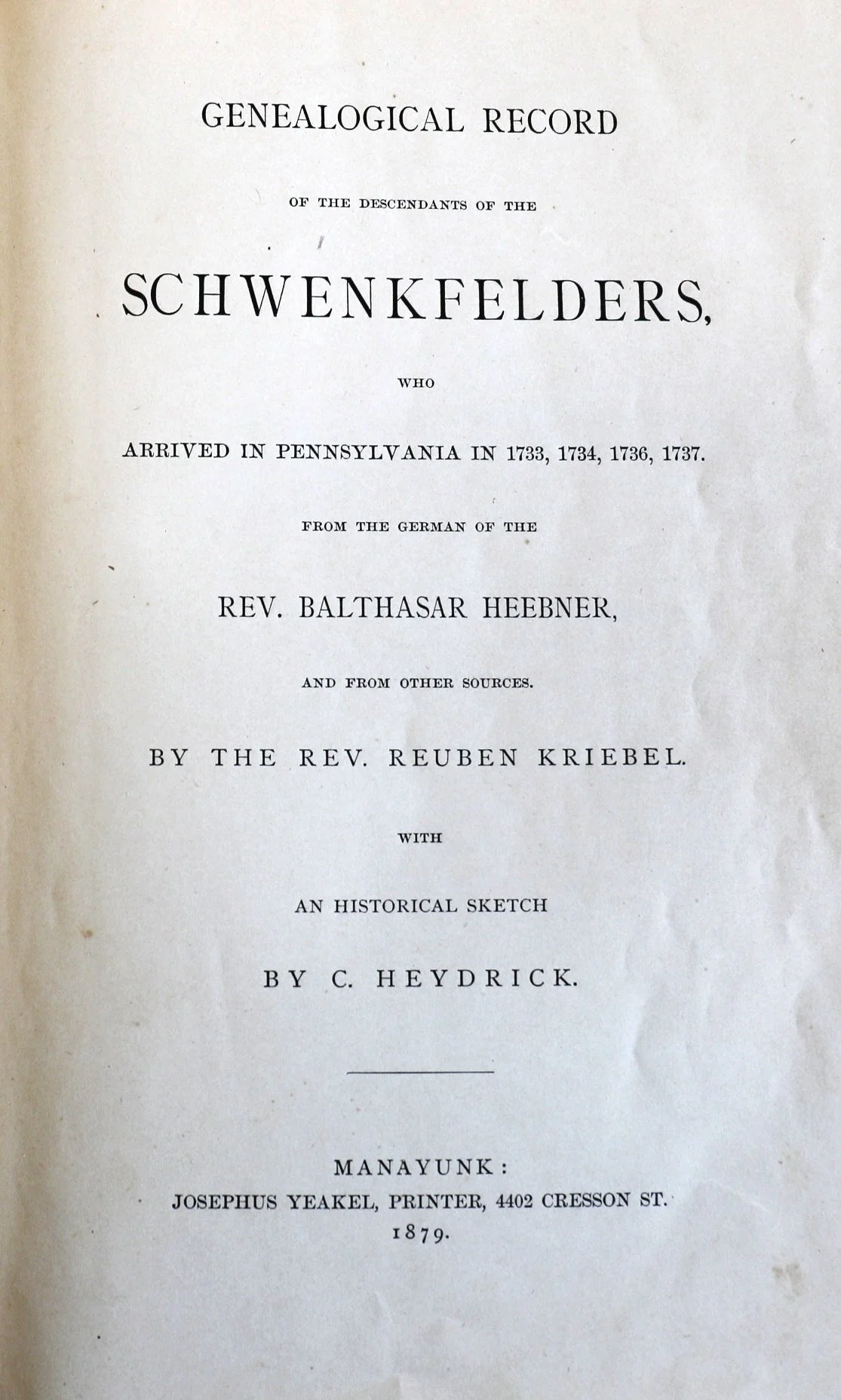How to read a family entry?
Family entries in the 1923 Genealogical Record use numbers and typeface to distinguish families, marriages, and religious affiliation. The GR is a great help to many people of Pennsylvania German background in their family history research.
How to Find People in the G.R.
The 1923 Schwenkfelder Genealogical Record provides ways to search for people and family names through its organization. Here are tips for using the book. The G.R., as it is known, is a great resource for genealogists.
What’s With All of the Numbers?
The 1923 Genealogical Record (GR) can be hard to read as each emigrant and family are given distinct numbers to follow bloodlines. Here is how to use the book. The G.R., as it is known, is a great resource for genealogists.
The Mystery of the 1879 GR
The way in which Rev. Heebner organized the Schwenkfelder Genealogical Record in the 1840s is not obvious to us today but formed the basis of the 1879 Genealogical Record compiled by Rev. Kriebel. The G.R., as it is known, is a great resource for genealogists.
How to Understand the Heebner G.R.
Rev. Heebner created a genealogical manuscript in 1848 that later editors of Schwenkfelder Genealogical Record used. The G.R., as it is known, is a great resource for genealogists.
What is the G.R.?
Yes, it’s the 102nd Anniversary of the GR (The Genealogical Record of the Schwenkfelder Families…) edited by Samuel Kriebel Brecht and published in 1923.






